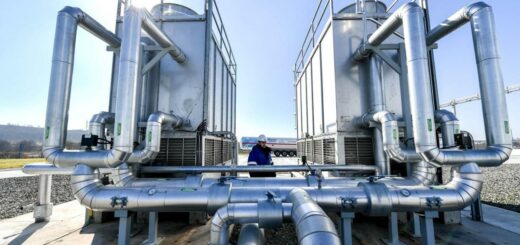U.S. economy, tormented by laborer deficiencies, added only 194,000 positions in September

Friday’s month to month information shows the proceeded with effect of the delta variation and the basic deficiency of laborers.
Following a frustrating August, the U.S. economy added a pitiful 194,000 positions in September, as a basic deficiency of laborers hampers the country’s monetary development.
The joblessness rate tumbled to 4.8 percent from 5.2 percent, the Bureau of Labor Statistics said Friday. Business analysts had been anticipating an increment of 500,000 and a joblessness pace of 5.1 percent.
“This is truly a flattening report,” said Nick Bunker, monetary examination chief at Indeed employing administration. “The expectation was that August was an abnormality yet the truth of the matter is, the delta variation was still with us in September. One hopeful understanding is that Covid-19 case counts are retreating, so future months ought to be more grounded. Yet, actually we are as yet in a pandemic.”
One certain in the report was the vertical tick in time-based compensations, which rose by 0.6 percent, versus evaluations of a 0.4 percent increment. Compensation development is a measurement on which the market is keeping a sharp eye as it battles to decipher the commotion around soaring costs, store network bottlenecks and what, precisely, it implies for swelling to be “passing.”
For the vast majority of the pandemic-downturn recuperation, measurements around income and pay development have been unstable. The emotional breakdown of the relaxation and accommodation area slanted profit information as a great many low-wage, administration area laborers lost their positions because of Covid-set off closures — and some contended that the enormous miss in August might have been a component of level recreation and neighborliness occupations, which until that point had contributed a normal of 350,000 new positions each month in the course of recent months.
In any case, even with those increases adding to the general recuperation in the work market, normal time-based compensations have kept on climbing. Tenacious shortcoming in the workforce support rate is a significant contributing component, said Ross Mayfield, a venture system investigator at Baird. Since June 2020, workforce investment has remained almost level, swaying from 61.4 percent to 61.7 percent.
“I think one about the principle factors that could add to higher or raised pay development going ahead is simply more tight stockpile in the work market,” he said. “In case there are practically less laborers, those that remain are in a superior situation to arrange wage climbs.”
“Inside assembling, organizations are 100% seeing the need and responding to the need to raise compensation at all levels,” said Ethan Karp, president and CEO of the Manufacturing Advocacy and Growth Network. “They actually can’t discover individuals regardless they do.”
What’s more, supply pressures are as yet tenacious. This makes it troublesome, market analysts say, to coax out precisely how much specialist pay is adding to the inflationary powers that are behind organizations raising their costs. “It surely is a contributing component, however to the extent the things we’re looking for swelling, it actually could not hope to compare to supply issues and Covid-19 issues,” Mayfield said.
“There most certainly are some short lived factors in the swelling we’ve seen. I think a ton of it likewise has to do with production network disturbances,” said Megan Horneman, head of portfolio procedure at Verdence Capital Advisors.
“The provisions are there. It’s simply an issue of getting them out into the economy,” she said — an element of the specialist lack that has port administrators, shipping organizations and conveyance benefits all running in need of help.
Taking care of additional to captivate those specialists into the work market — or take them from contenders — will tackle the issue for the time being, yet higher work costs are likelier to stay close by than raised costs for wares or parts, as financial experts concur that compensation gains are “stickier” than value gains. The inventory of central processors or cardboard boxes or raw petroleum changes with supply, however while managers can raise pay, they by and large can’t singularly slice wages or compensations — particularly not in the current tight work market.
“The pay swelling is the tacky one — that is the one that will make longer-enduring expansion,” Horneman said.
For the occasion, ongoing efficiency gains have given bosses a little space to breathe, said Harry Holzer, educator of public strategy at Georgetown University. “[There] could be some higher usefulness that would make it simpler for firms to pay these higher wages without swelling,” he said.
Many view this as something worth being thankful for, inasmuch as the value pressures that are crushing American customers do, truth be told, retreat in the coming months. “A few of us trust that expansion will begin to direct as these bottlenecks and supply deficiencies deal with, and we’re trusting that these compensation increments outlive the cost expands,” Holzer said.
“My expectation is that compensation increments will for the last time outperform swelling, and assembling will simply be more cutthroat,” Karp said. “Makers raising wages is something awesome. It’s useful for the business, it’s useful for individuals. It’s what’s required.”
Disclaimer: The views, suggestions, and opinions expressed here are the sole responsibility of the experts. No STOCKS MONO journalist was involved in the writing and production of this article.



